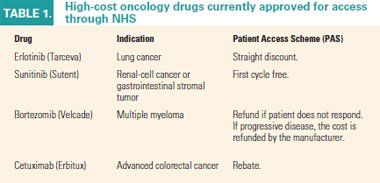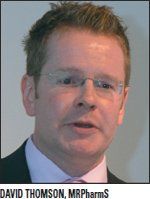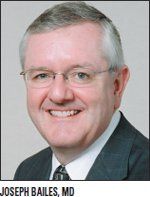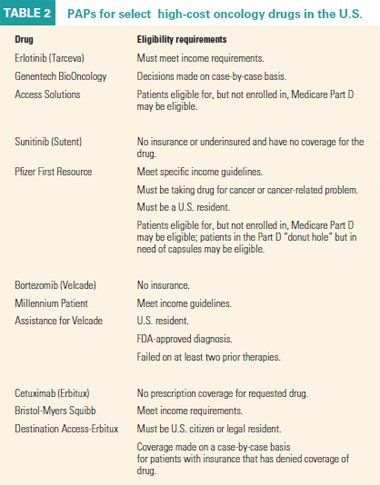Global cost-sharing programs for pricey drugs fall short
Survey results indicate patient access schemes in the UK and the U.S. need refinement.
ABSTRACT: Survey results indicate patient access schemes in the UK and the U.S. need refinement.
With the cost of cancer drugs increasing at a rate that is generally thought to be unsustainable, many countries are faced with the difficult question of how to ensure access to these drugs without breaking the financial resources of individuals and systems paying for them.
One solution to this dilemma has been programs sponsored by pharmaceutical companies to help defray the cost. Programs such as patient access schemes (PAS) in the UK and patient assistance programs (PAPs) in the U.S. offer specific risk-sharing or cost-sharing formulas for select high-cost cancer drugs.
In the UK where the nationalized healthcare system absorbs the cost of drugs and services, the hope was that PAS would help reduce the cost of a high-cost drug to the National Health Service (NHS).

But has PAS proven effective? A recent report by the British Oncology Pharmacy Association (BOPA) found that PAS was plagued by poor management, a shortage of manpower, and a lack of implementation, all of which means the NHS may still be shouldering the financial burden (see Table 1).
Problems with PAS
In the UK, the cost of drugs is particularly important for access. The approval of drugs accessible through the NHS depends on their proven clinical- and cost-effectiveness, which is determined by the National Institute for Health and Clinical Excellence (NICE). Once approved, drugs are provided to patients through hospital provider trusts, which are in turn reimbursed for the cost of the drug through the patient's local primary care trust (PCT).
Currently, a number of PAS have been approved by NICE for use through NHS. The BOPA report compiled data from 31 NHS hospital provider trusts, including 756 patients entered in PAS that had been running in the UK for at least 12 months between 2007 and 2009 (see Table 1).

"The purpose of PAS is to allow drug prices to better reflect value to NHS patients and increase access to cost-effective innovative medicines," said David Thomson, MRPharmS, BOPA chair and lead pharmacist at the Yorkshire Cancer Network based in Harrogate. "This research shows that the NHS may be failing in delivering this worthy purpose, and unless properly managed and supported, the NHS will bear the financial risk of the schemes."
Among the key findings of the study, according to Mr. Thomson, was that refunds for two of the most common PAS, sunitinib (Sutent) and bortezomib (Velcade), were not being passed on to the funding PCT in 47% of cases.
Pfizer Oncology, the maker of sunitinib, supports a PAS in the UK, and a spokesperson for the company pointed out that the "uptake of new, innovative medicines remains low in the UK in comparison to other European markets. This is despite the fact that the cost of these medicines is often actually lower than in other markets, and that the UK actually spends less of its health budget on medicines than the rest of Western Europe."
FACT BOPA report "Cancer Network Pharmacist Forum: A Report into the Uptake of Patient Access Schemes in the NHS," November 2009,
bopawebsite.org/tiki-download_file.php?fileId=626
The Pfizer spokesperson said that it continually monitors PAS to determine if the programs are actually improving access to medicines in a financially sustainable way for the company and the NHS.
Another key finding of the BOPA report was the current incapacity of NHS to manage more PAS without funding staff time to manage, coordinate, and track the schemes, Mr. Thomson added.
Despite this finding, Mr. Thomson believes more PAS will be created in the future. "I have no doubt that schemes will continue to increase, but it is our hope that NICE, the department of health, and pharma will work with the NHS to develop a standard 'template' for schemes that the NHS can implement relatively easily," he said.
The need for a standard template for schemes was also highlighted by the BOPA report, in which most respondents (73%) thought it would be beneficial to allow manufacturers to select a familiar "off-the-shelf" scheme.
Until a standard template is developed and implemented, according to Mr. Thomson, "it appears that pharma will continue to present ever more complex and differing schemes to the NHS, which, it would appear, the NHS is already struggling with."

Finally, the report highlighted the need for improvements in the way NHS supports the implementation of PAS. A step in this direction has already been taken with the recent formation by NICE of the Patient Access Scheme Liaison Unit (PASLU), a coordination body that will help oversee the PAS.
"The new arrangements will provide a robust process through which these schemes can be assessed and will increase opportunities for individuals working in the NHS to contribute to the review process," according to a NICE representative.
Learning from the UK experience
Although the current marked-based healthcare delivery system in the U.S. is different from the UK system, the Centers for Medicare & Medicaid Services (CMS) obviously still foots the bill for a large portion of healthcare expenditures.
However, unlike in the UK, drug approval is based on safety and efficacy; CMS programs and private insurance programs are not allowed to consider cost or cost-effectiveness in their approval decisions, explained Robert Catalano, PharmD, vice president, regulatory affairs for the Coalition of Cancer Cooperative Groups in Philadelphia.
"If the U.S. had something comparable to what the UK has in the NICE program, that would be a good thing," said Dr. Catalano, who is also regulatory officer for the Eastern Cooperative Oncology Group (ECOG). "The drug companies would then share part of the burden that the patient is taking on. The cost of cancer drugs is going to bankrupt the entire Medicare system."

Data adapted from NeedyMeds at
www.needymeds.org
.
Currently, PAPs are geared only toward truly indigent patients who meet income requirements and are referred by an insurance-approved, preferred physician, he said (see Table 2).
The PAPs do work, but the lack of a universal application form among programs and companies is a big problem, said Joseph S. Bailes, MD, chair of the ASCO government relations committee.
Incorporating cost-effectiveness into approval decisions for drugs may potentially put patients at a disadvantage, Dr. Bailes said. Instead, the focus needs to be placed on better communication between physicians and patients about drug costs and cost-effectiveness. This would be a better first step to integrating cost issues into the U.S. healthcare delivery system. "At least in the immediate term, ASCO is working on educating doctors on how to talk to patients about these [cost] issues," he said.
Financial assistance for patients can come at a considerable cost to provider
BY CAROLINE HELWICK
No good deed goes unpunished and that would seem to ring true for oncology practices that strive to help needy patients obtain financial assistance for pricey drugs, based on the experience of one cancer center.
Cary Presant, MD, a senior member of the Los Angeles-based Wilshire Oncology Medical Group, concluded that his practice spends $75 for each patient it seeks to help. "You may say that's trivial, but it's not, because we are operating at a miniscule margin," he said. "We have to figure out how to pay for this. Practices cannot afford this."
Some 20% of cancer patients exhaust their life savings paying for treatment, he noted, and his group is committed to helping such patients pay their out-of-pocket costs. By using a structured program that targets patient assistance programs and foundations, Wilshire Oncology obtains some help for 91% of their patients but must fund a half-time administrative position to make this happen, according to a study Dr. Presant's group conducted (ASCO 2009 abstract 6630).
There is no model for coordinating foundation support with patients, nor have the costs of seeking assistance for patients been evaluated before now, Dr. Presant said.
The group's aim was to develop a patient support program to coordinate applications to copay assistance and cancer-specific support foundations, and to determine the efficiency, costs, and cost-effectiveness of this system. They hired one half-time employee to serve as a patient support coordinator.
Over a seven-month period between September 2008 and March 2009, the group prescribed chemotherapy to 500 patients (using 555 treatment plans), of whom 13 were uninsured and 46 were underinsured and expressed a need for assistance to meet their copay/coshare.
For the 13 uninsured patients, the coordinator helped 54% obtain free drugs through a drug replacement program by the manufacturer, while 46% of requests were denied. For the underinsured patients, 161 total applications were submitted to foundations, averaging 23 per month. The approval rate per application for this group was 52%, while 47% were denied, reported lead author Swapnil P. Rajurkar, MD.
Ultimately, 42 patients altogether (91%) were approved for grants and four (9%) were denied. Denials were based on patient factors (income too high), foundation factors (out of funds), and treatment factors (specific medication or diagnosis not covered). Four patients were denied funds from every foundation queried.
The coordinator obtained a total of 85 grants over seven months, totaling $252,747. Interestingly, the average patient needed $1,600 to $2,500 for out-ofpocket costs, but the average grant far exceeded this amount, at $6,018.
Unfortunately, though the residual funds could be reallocated to needy patients, the funds are tied up for several months and many patients "move on," Dr. Rajurkar said. "We had to give back the difference. Some patients got more than they needed and others didn't get any. That's a problem."
The cost of a half-time patient support coordinator, based on $16 per hour and benefits, was $1,733 per month, for a total seven-month cost to the practice of $12,131 and a cost per application of $75.
Dr. Presant proposed that oncology practices receive some form of "reimbursement support" from the foundations, pharmaceutical industry, or Medicare to meet these costs. State societies or ASCO might consider coordinating foundation financial support programs and implement a universal application form, he suggested.
"The foundation would receive supplemental grant money from all the manufacturers to cover our administrative costs and keep our practices whole, while at the same time it would assure our patients that we can do as many applications as needed to get assistance for them," he said.